Хаас за Бразилия
Ромен Грожан:
You endured a difficult weekend in the last grand prix in Mexico City. What were you struggling with and was it specific to the Autodromo Hermanos Rodriguez or do you expect to face similar challenges in Brazil?
Well, we struggled in qualifying with both cars. We didn’t really have any pace. In the race, the pace was better but, unfortunately, my car was badly damaged following the contact with Fernando Alonso. So, we really struggled during the race with the damage. I lost a lot of downforce from the floor. It was a difficult one. I’m hoping that Brazil will be a little less challenging. Hopefully, we’ll get better performance, which was the case last year. Mexico is a very special one, with the altitude and the cooling, and so on. We didn’t have much downforce on the car. Obviously in the race, when we could’ve made some ground, the damage didn’t allow us to do so.
When you have a tough weekend, do you dwell on it or do you try to put it out of your mind as quickly as possible and focus on the next race?
I think having a family is really good in this aspect. I go back home and I play with the kids. They make you forget you’ve had a tough weekend. You can always learn from it, and you need to learn from a tough one, but it doesn’t put you down as it would if you maybe didn’t have a family. They just boost me again, and I just use the experience to move forward.
With only two races remaining, the midfield is as tight as ever, specifically among Haas F1 Team, Renault and Toro Rosso. How would you characterize this battle, and do you find yourself looking at the time sheets to see where you stack up to the drivers on those teams?
I think out of those teams, Renault is the faster one. They’ve got a really good car through to the end of the season. They’ve had a bit more of a difficult time in the races, which has allowed us to close the gap and keep them in sight. Toro Rosso is the one we can try to go for. They’re not performing better than we are, and they’ve got less experience amongst their drivers, so that should help us. We’re going to do everything we can to get those positions because it’s very important for the team.
Whenever Formula One travels to Brazil, Ayrton Senna’s legacy is prominent. Of all his races, is there one that stands out for you?
Brazil is always special because of Ayrton Senna. He was one of the biggest names in Formula One. Interlagos is a special place. There’s so much history there. On raceday you’ve got so much support from the fans. I remember Ayrton winning there in 1991 when he couldn’t hold the trophy in the air because he was so tired and had the pain in his arms from driving.
Interlagos was resurfaced prior to the 2014 race. How much has the track changed since then and what do you expect this year with another year of weathering to the track surface?
It was good because it was very bumpy. Unfortunately, some of the curbs were changed and the nature of the track changed a little bit, which is a bit of a shame. Generally, it’s a track I really like. It’ll be interesting to see how it’s evolved with the heavy rain we know you can get in Brazil. We’ll just go out there and see what we can do.
Interlagos appears to be a very physical track, and heat often plays a role in the performance of the car and the driver. Considering these variables, how do you attack the track?
It’s a pretty tough track with not much opportunity for a rest. Even in the straight lines you can’t rest as much as you would like. You’re at altitude as well, at 800 meters (2,625 feet), so coming from Mexico that’s nothing, but you’re still not at sea level. The weather can be challenging. It can be very warm and humid. It’s a pretty intense challenge but, at the end of the day, that’s what we’re looking for.
Last year’s Brazilian Grand Prix was run in the wet, but in 2015 when the race was run in the dry, the top-three finishers used a three-stop strategy. What needs to happen to make a three-stop strategy work over a typical, two-stop strategy?
I think it’s the tire degradation and the tire delta time between the different compounds. Let’s say you’ve got a soft tire, which is much faster than the medium, but degrades quite quickly, then you’re better with three stops. If you run the medium, and the pace that it brings compared to the soft is favorable, and the degradation is low, then you should go for two stops. That’s how it’s calculated.
What is your favorite part of the Autodromo Jose Carlos Pace?
I like the Senna ‘S’, and the first few corners are pretty amazing.
Describe a lap around the Autodromo Jose Carlos Pace.
You go onto the pit straight and then big braking to go to the Senna ‘S’. Very tricky turn in on the left-hand side. You really want to be well placed for the right turn two, which sets you up for turn three and the second straight. Big braking to turn four, left-hand side, 90 degrees, a pretty good corner. Then you get to the middle part – turn five is a high-speed corner going up the crest. It’s tricky. Then it’s turn six and the hairpin on the right-hand side. We can’t use the curb as much as we used to. Turn seven is a left-hand side corner, no braking, just a lift off. It’s a bit of a strange one. The second hairpin is then on the right-hand side, a second high-speed corner going down the hill, prior to the last turn. It’s a left-hand corner where you really want to go early on the throttle because you’re facing a wall to go up to the finish line.
Кевин Магнусен: You overcame a difficult Friday and Saturday last weekend in Mexico City with a sensational drive on Sunday, holding off Lewis Hamilton and Fernando Alonso to finish eighth and earn four valuable points. Talk about all that you endured last weekend and how satisfying your drive on Sunday was for you and the team.
After a difficult Saturday, where we were all pretty down after qualifying so badly, it was awesome to get a good result and come back strong on Sunday.
After the Mexican Grand Prix, you said your result felt like a victory. For those unfamiliar with Formula One, how does an eighth-place finish feel like a win?
It’s really tough in Formula One and car performance plays a massive part in what result you’re going to get. After the poor qualifying we had, it showed we weren’t quite on top of the performance, and we didn’t think we were going to get points. On Sunday we delivered – almost over-delivered – to finish eighth and get those four points.
The Mexican Grand Prix showcased the resiliency of you and Haas F1 Team. Despite the odds stacked against you before the green flag waved, you earned one of your best finishes of the year. How important is it to remain positive and go into a race with an open mind, regardless of your starting position?
The result on Sunday showed that you should never give up, no matter what has happened leading up to the race. You can always over-perform and get something out of it, even if it looks bad. It shows what the team is made of.
With only two races remaining, the midfield is as tight as ever, specifically among Haas F1 Team, Renault and Toro Rosso. How would you characterize this battle, and do you find yourself looking at the time sheets to see where you stack up to the drivers on those teams?
It’s only one point now to Renault for seventh in the constructors championship, and it’s only six points to Toro Rosso. It’s extremely close and anything can happen in these last two races. We just need to be on top of everything and get everything out of it that we can. It’s not going to be easy. Those teams are doing well and they’re tough competitors.
What is your favorite part of the Autodromo Jose Carlos Pace?
The Senna ‘S’ bend. It’s a nice flowing part of the track and it’s going to be challenging to see how fast it is this year with the new cars.”
Describe a lap around the Autodromo Jose Carlos Pace.
Legendary and challenging.
Гюнтер Щайнер: You overcame a difficult Friday and Saturday last weekend in Mexico City to earn a points-paying result on Sunday. Talk about all that you endured last weekend and how satisfying Magnussen’s eighth-place finish was for the team.
If somebody had told us on Friday or Saturday that we would finish up in the points, even with one point, we’d have signed on for it. It just shows that you’ve always got to keep on believing in yourself and pushing. With a little bit of luck, and a fantastic drive from Kevin, we ended up eighth. Obviously, the Friday and Saturday were disappointing. Everything which shouldn’t have happened to us did, and we were just slow. We learned a lot, also in view for next year, how not to do things – which is always good. We’re very thankful for the points we got. We’ll try to get more.
Magnussen had to hold off two world champions to earn his eighth-place finish in Mexico City. Talk about that drive and what you saw from him in the closing laps of the Mexican Grand Prix.
I think it was pretty cool. He was just doing a fantastic job. The McLaren was on ultrasoft tires and we were on soft. So, to hold off a McLaren on ultrasofts with a world champion (Fernando Alonso) behind the wheel is not easy. He did very well, and with style. To hold off Lewis (Hamilton) in a Mercedes for two laps is quite astonishing. Maybe Lewis didn’t have to push hard because he was world champion if he finished ninth, but nevertheless, Lewis doesn’t want to finish ninth if he can finish eighth, so for sure he tried but he couldn’t get him. I think it was Kevin’s best drive of the year for Haas.
After the Mexican Grand Prix, Magnussen said his result felt like a victory. For those unfamiliar with Formula One, how does an eighth-place finish feel like a win?
I think if you use the pecking order of where the cars are now, we are toward the end, especially in Mexico. Our free practice runs and our qualifying runs weren’t good. In qualifying, we were last. We were the slowest ones. For sure, coming back in the race and finishing eighth, and fighting for eighth and being competitive, it was like a win for us. We know that the first six cars we can’t beat anyway and, normally, we’ve got two more teams in front of us. For sure, for him, it must have felt like a win and he kept two world champions behind him.
The Mexican Grand Prix showcased the resiliency of Haas F1 Team. Despite the odds stacked against the organization before the green flag waved, the team earned one of its best finishes of the year. How important is it to remain positive and go into a race with an open mind, regardless of your starting position?
I think every day, and every session, you need to be open about being able to do better. You must always believe in what you can do. The moment you don’t believe in yourself, or in the team anymore, if you give up on it, you won’t achieve anything. You take it by the lap, the hour and the day. Whatever it is, you’re always convinced you can do better, otherwise where do you take your motivation from to do this?
With only two races remaining, the midfield is as tight as ever, specifically among Haas F1 Team, Renault and Toro Rosso. How would you characterize this battle?
For sure, we try to grab at least one position. It’s very difficult because we’re fighting with teams which are as good, if not better than us. Renault is a works team. They’ve got a lot of people working for them. They’ve made good progress over this year. They’ve had a few reliability issues lately, which played into our hands, and we took them. You cannot predict what is happening. Who would’ve predicted that we would come away with points in Mexico? If you’d told that to someone on Saturday, people would’ve laughed about it. Nothing is impossible to happen, everything is possible to happen. I don’t know where it ends up, but I’m sure we’ll put a fight up for it.
What do you want to achieve before Haas F1 Team’s sophomore season is over?
A goal would be to finish better than last year, which would be seventh, at least. Can we achieve it? We’re sure going to try.
Last year’s Brazilian Grand Prix was run in the wet, but in 2015 when the race was run in the dry, the top-three finishers used a three-stop strategy. What needs to happen to make a three-stop strategy work over a typical, two-stop strategy?
With the tires we’ve got this year, there will be no three-stop strategies, no chance. We need to get the data on Friday to see if it’ll be a one-stop or a two-stop, but a three-stop will never work.
Formula One and the FIA jointly announced a direction for power unit regulations in 2021, including a higher-revving engine (3,000 rpm higher), removal of the MGU-H, a more powerful MGU-K with manual driver deployment and a single turbo with dimensional constraints and weight limits. Granted, you’re not an engine manufacturer as you receive your engines from Ferrari, but what is your take on this direction?
They’ve tried to achieve the things they set out with more noise, more equality and lower costs. That is the aim of it. I think they’ve thrown out a good concept to start off with. Now the details can be worked out by the technical people. The concept is out there and I don’t think the concept will be changed. But now they need to work on the detail of the concept to achieve the goals they’ve set themselves with more noise, more equality and lower costs for the customer teams. Hopefully, they can achieve it.
Is there an element of this direction you’d like to see expanded, such as a spec gearbox that can mate with any engine?
I think the aim is, with the new spec of engine, that you can bolt it onto any car, and any part to it. They will define more of the attachment points.
Much has been made about the sound of Formula One cars, specifically that they need to be louder, like they used to be. What are your thoughts?
The noise – if you don’t have it, you think it’s not important because it’s just noise. If you hear a V10 or a V12 going by, when you see these historic cars, it sounds beautiful. I think a lot of people like the noise. I don’t think we’ll get to that noise of a V10 or a V12, because you have a turbo on it. You can improve, and the aim is with making the rev limit 3,000 rpm higher than the current engine, it can be achieved to be noisier. I think it will never be like it was. A little bit noisier is good because I think it’s great for the fans to hear a car coming from far away.
Of all the elements mentioned in the direction of the 2021 power unit regulations, is the most important and unspoken element cost?
I wouldn’t say it’s the most important. It’s as important as the other ones because even if it’s cheap, if people don’t like the engine, why would we do it? There needs to be a compromise between what the fans like, which is noise, and new manufacturers coming in, which is what people want. The cost element is also important for new people, for current people, and for the teams which don’t make their own engines, like us. It’s part of what we need to do to change Formula One to be better.
How long will it take to get everyone on the same page to enact this new direction for power unit regulations?
I think it will take a year to finalize the regulations. I think that’s the aim, to have the final version of the technical regulations by the end of 2018. Then it’s a two-year development process. I think already the manufacturers will start now to develop, because you cannot be behind.


















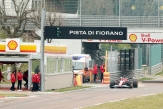
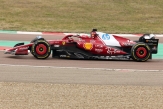
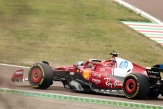

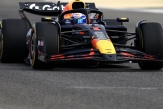
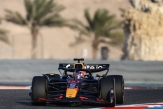
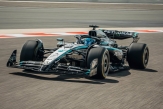
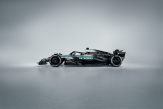
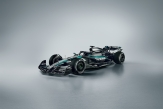
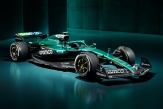
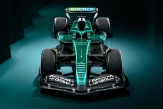
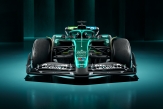
.jpg)
.jpg)
.jpg)
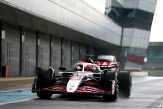
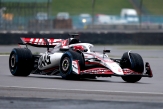
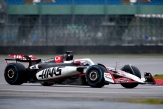
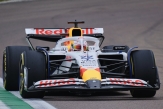
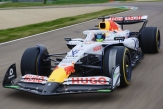



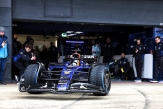
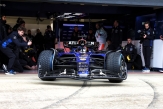
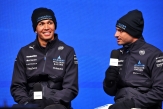

02/12/2025 от Огнян Тенчев (drJeckyll), няма коментари